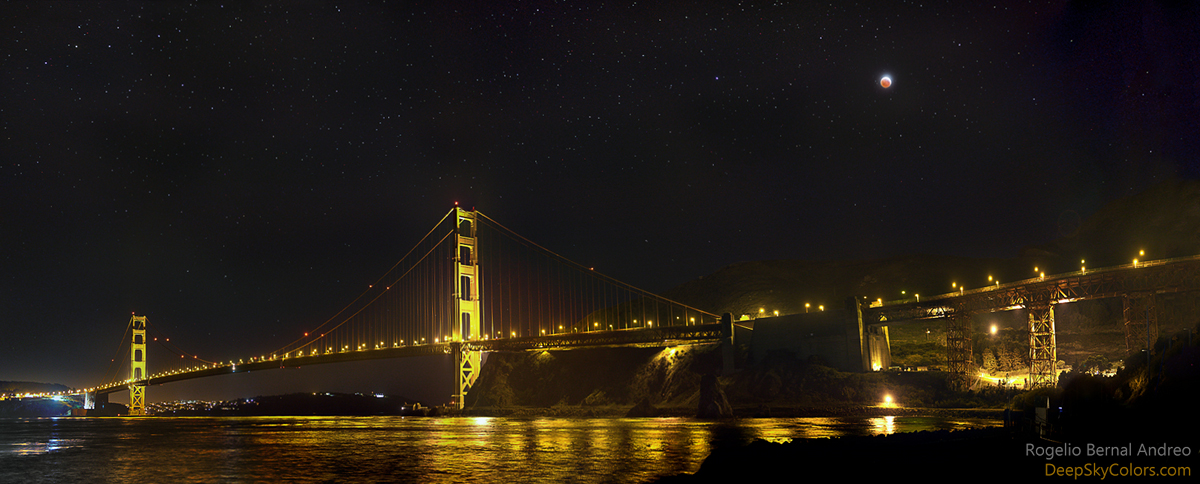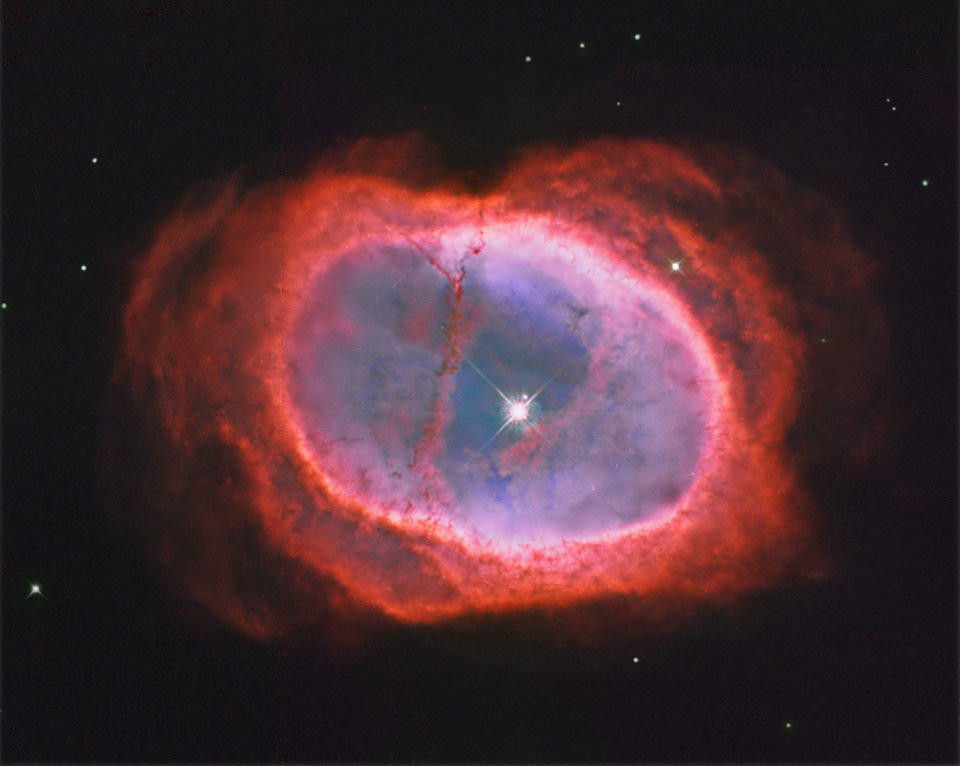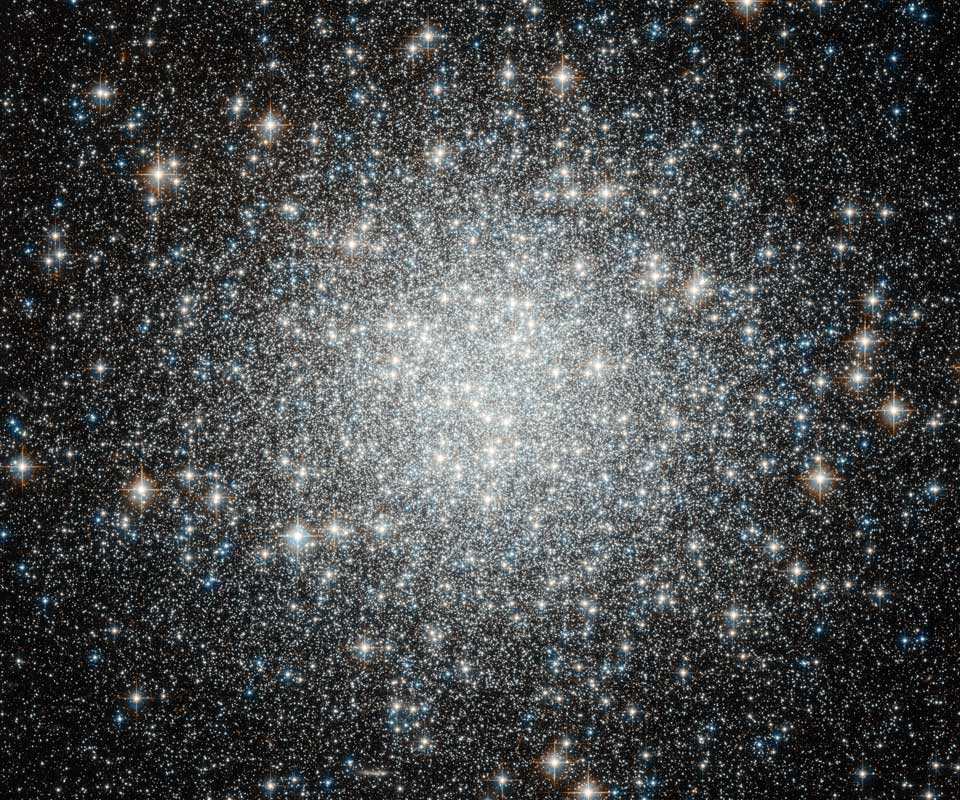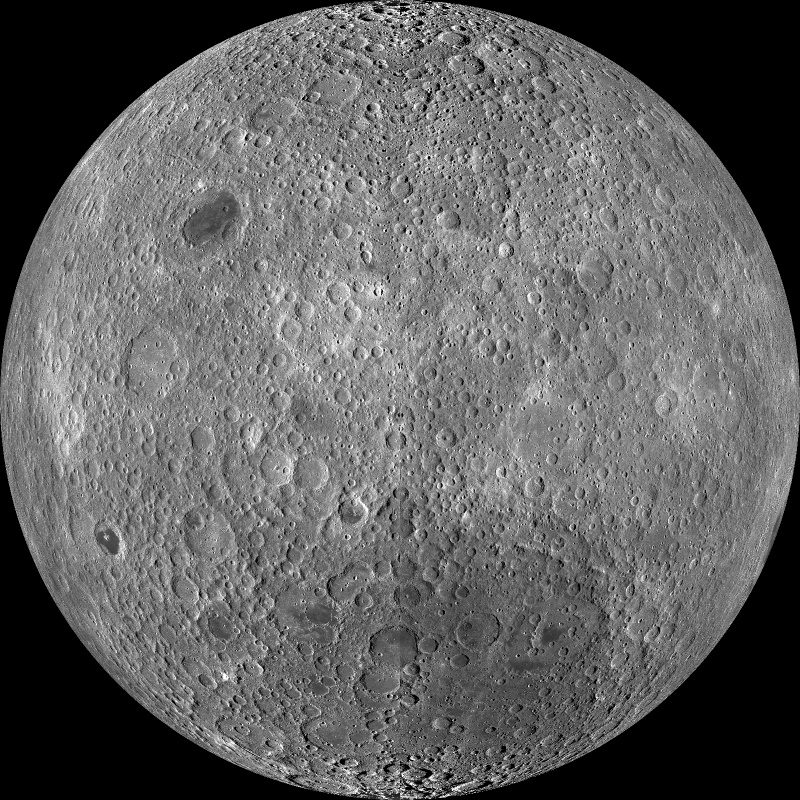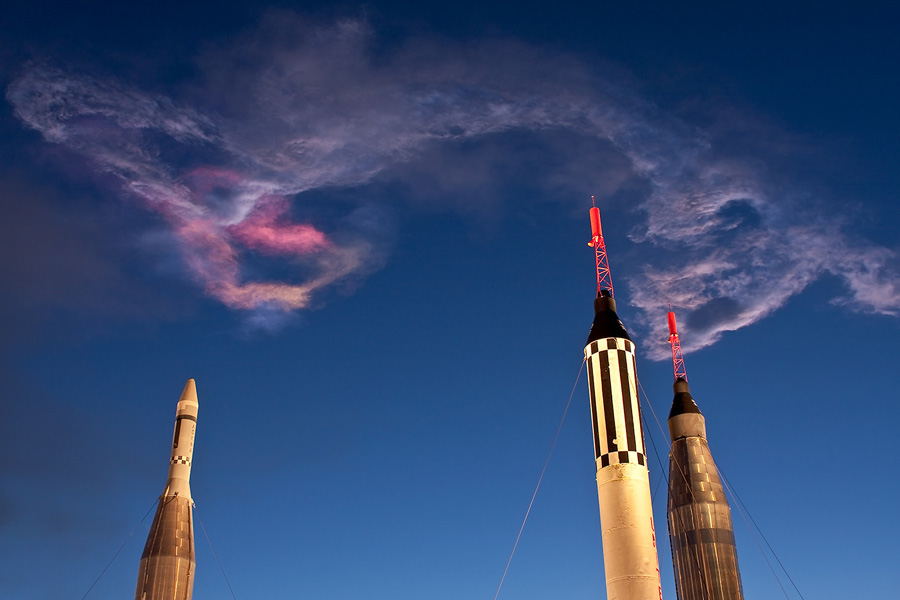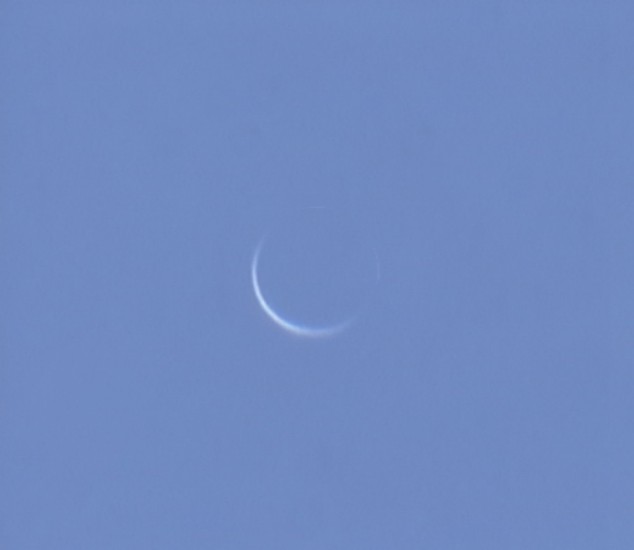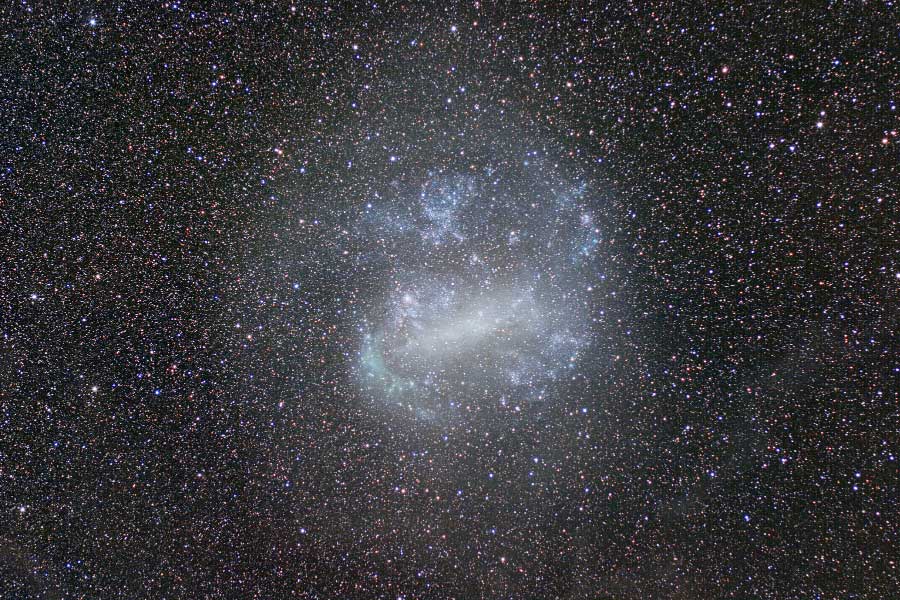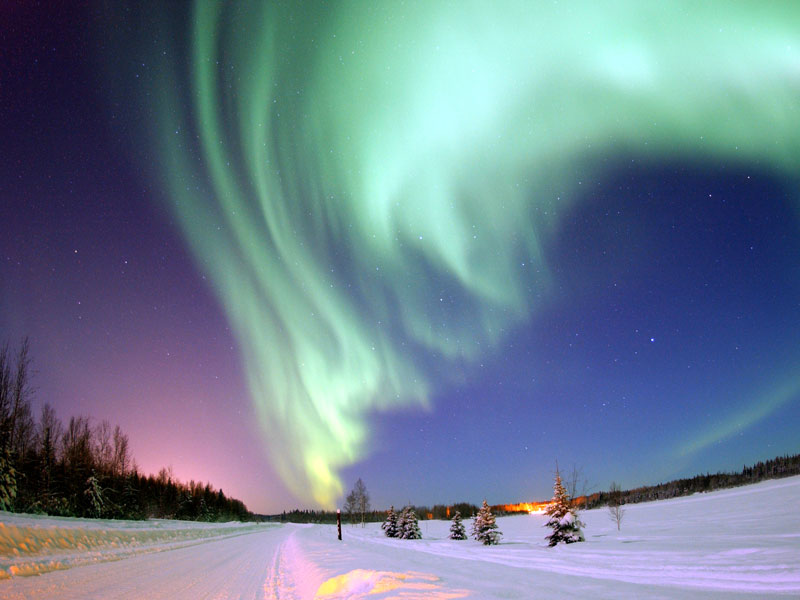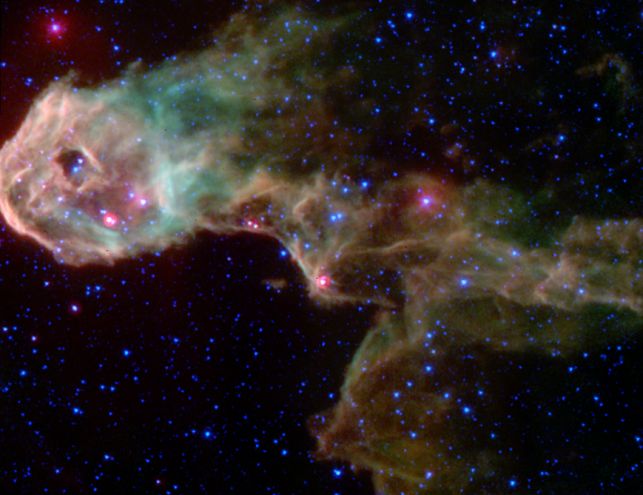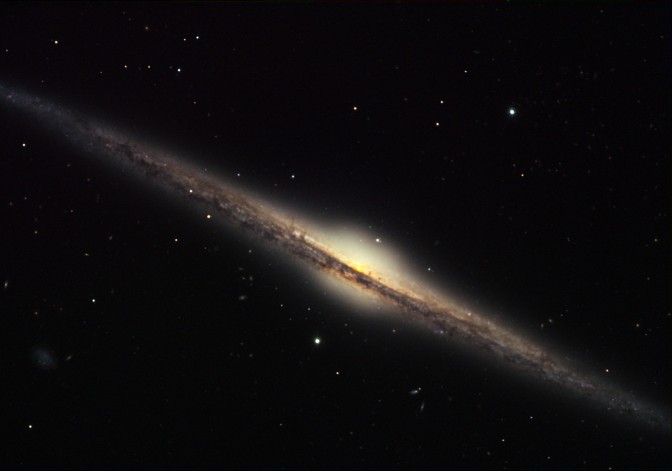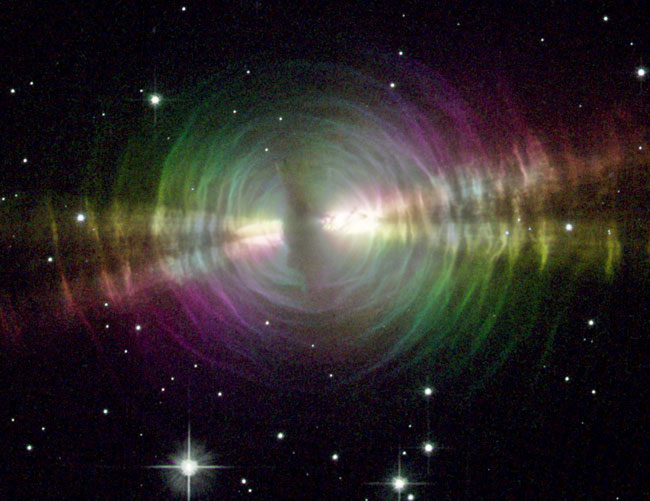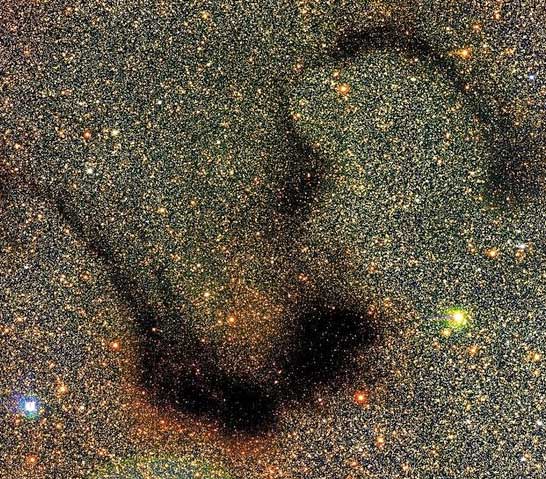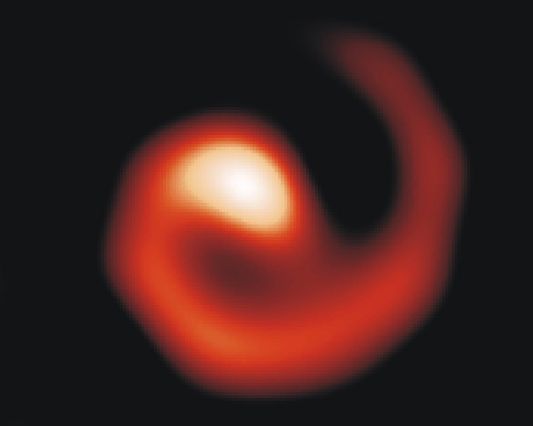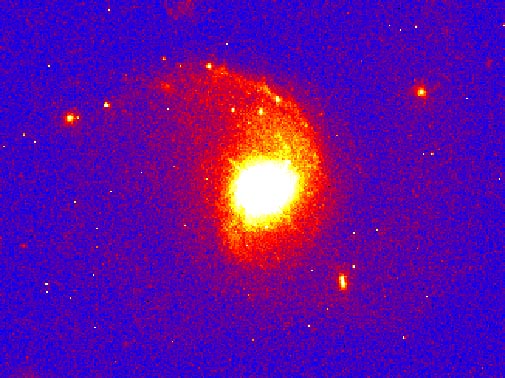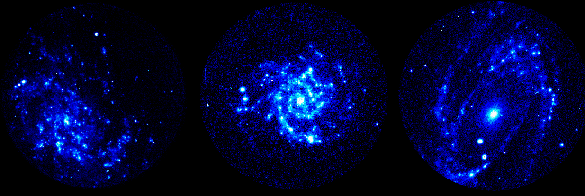| << Previous | Index | Next >> |
2015 Shadows play on the water and in the sky in this panoramic view of the April 4 total lunar eclipse over San Francisco's Golden Gate Bridge. Just within planet Earth's shadow the Full Moon's disk is still easy to spot at its brief total phase. The urban night skyscape was composed to cover the wide range of brightness visible to the eye. The shortest total lunar eclipse of the century, this eclipse was also the third in a string of four consecutive total lunar eclipses, a series known as a tetrad. Coming in nearly six month intervals, the previous two were last April 15 and October 8. The next and final eclipse in the tetrad will be on September 28. This 2014-2015 tetrad is one of 8 total lunar eclipse tetrads in the 21st century.
2014
Video Illustration Credit: Lucie Maquet, Observatoire de Paris, LESIA
2013 It's the dim star, not the bright one, near the center of NGC 3132 that created this odd but beautiful planetary nebula. Nicknamed the Eight-Burst Nebula and the Southern Ring Nebula, the glowing gas originated in the outer layers of a star like our Sun. In this reprocessed color picture, the hot purplish pool of light seen surrounding this binary system is energized by the hot surface of the faint star. Although photographed to explore unusual symmetries, it's the asymmetries that help make this planetary nebula so intriguing. Neither the unusual shape of the surrounding cooler shell nor the structure and placements of the cool filamentary dust lanes running across NGC 3132 are well understood.
2012 If our Sun were part of M53, the night sky would glow like a jewel box of bright stars. M53, also known as NGC 5024, is one of about 250 globular clusters that survive in our Galaxy. Most of the stars in M53 are older and redder than our Sun, but some enigmatic stars appear to be bluer and younger. These young stars might contradict the hypothesis that all the stars in M53 formed at nearly the same time. These unusual stars are known as blue stragglers and are unusually common in M53. After much debate, blue stragglers are now thought to be stars rejuvenated by fresh matter falling in from a binary star companion. By analyzing pictures of globular clusters like the above image taken by the Hubble Space Telescope, astronomers use the abundance of stars like blue stragglers to help determine the age of the globular cluster and hence a limit on the age of the universe. M53, visible with a binoculars towards the constellation of Bernice's Hair (Coma Berenices), contains over 250,000 stars and is one of the furthest globulars from the center of our Galaxy.
2011 Tidally locked in synchronous rotation, the Moon always presents its familiar nearside to denizens of planet Earth. From lunar orbit, the Moon's farside can become familiar, though. In fact this sharp picture, a mosaic from the Lunar Reconnaissance Orbiter's wide angle camera, is centered on the lunar farside. Part of a global mosaic of over 15,000 images acquired between November 2009 and February 2011, the highest resolution version shows features at a scale of 100 meters per pixel. Surprisingly, the rough and battered surface of the farside looks very different from the nearside covered with smooth dark lunar maria. The likely explanation is that the farside crust is thicker, making it harder for molten material from the interior to flow to the surface and form the smooth maria.
2010 On April 5, visitors to Kennedy Space Center saw these colorful clouds, twisting and drifting through dawn skies. Of course, the clouds were rocket engine plumes from the predawn launch of the space shuttle Discovery on the STS-131 mission to the International Space Station. Their layered colors are created as they reflect the reddened light from the still rising Sun. Fittingly, denizens of the space center's rocket garden are lit in the foreground. At the far left is a 1960s vintage multistage Atlas-Agena rocket. Together on the right, are Mercury-Redstone and Mercury-Atlas rockets.
2009 This remarkable picture of a slender crescent Venus was made during daylight hours on March 26. Venus was then very near inferior conjunction, its closest approach to a point on a line directly between Earth and the Sun. So, daylight was a good time to carefully record the telescopic view when both Venus and Sun were high in the daytime sky. Near inferior conjunction, Venus is closest to us and at its largest apparent size, but Venus is also strongly backlit by sunlight, presenting its night side partially outlined by a narrow crescent. What makes the image remarkable are the faint arcs extending beyond the sunlit crescent around to the night side of Venus, due to sunlight filtering through the planet's dense atmosphere. Astronomer Eddie Guscott reports from his site in Essex, England that the faint extensions came and went as the Earth's atmospheric blurring changed. His image was constructed from 85 of the sharpest frames chosen from thousands taken with a webcam and telescope.
2008 Is this a spiral galaxy? No. Actually, it is the Large Magellanic Cloud (LMC), the largest satellite galaxy of our own Milky Way Galaxy. The LMC is classified as a dwarf irregular galaxy because of its normally chaotic appearance. In this deep and wide exposure, however, the full extent of the LMC becomes visible. Surprisingly, during longer exposures, the LMC begins to resemble a barred spiral galaxy. The Large Magellanic Cloud lies only about 180,000 light-years distant towards the constellation of Dorado. Spanning about 15,000 light-years, the LMC was the site of SN1987A, the brightest and closest supernova in modern times. Together with the Small Magellanic Cloud (SMC), the LMC can be seen in Earth's southern hemisphere with the unaided eye.
2007 Higher than the highest mountain, higher than the highest airplane, lies the realm of the aurora. Aurora rarely reach below 60 kilometers, and can range up to 1000 kilometers. Aurora light results from solar shockwave causing energetic electrons and protons to striking molecules in the Earth's atmosphere. Frequently, when viewed from space, a complete aurora will appear as a circle around one of the Earth's magnetic poles. The above digitally enhanced photograph was taken in 2005 January shows a spectacular aurora borealis above the frozen landscape of Bear Lake, Alaska, USA. The above image was voted Wikipedia Commons Picture of the Year for 2006.
2006 Where did all the stars go? What used to be considered a hole in the sky is now known to astronomers as a dark molecular cloud. Here, a high concentration of dust and molecular gas absorb practically all the visible light emitted from background stars. The eerily dark surroundings help make the interiors of molecular clouds some of the coldest and most isolated places in the universe. One of the most notable of these dark absorption nebulae is a cloud toward the constellation Ophiuchus known as Barnard 68, pictured above. That no stars are visible in the center indicates that Barnard 68 is relatively nearby, with measurements placing it about 500 light-years away and half a light-year across. It is not known exactly how molecular clouds like Barnard 68 form, but it is known that these clouds are themselves likely places for new stars to form. It is possible to look right through the cloud in infrared light.
2005 In December of 2003, the world saw spectacular first images from the Spitzer Space Telescope, including this penetrating interior view of an otherwise opaque dark globule known as the Elephant's Trunk Nebula. Seen in a composite of infrared image data recorded by Spitzer's instruments, the intriguing region is embedded within the glowing emission nebula IC 1396 at a distance of 2,450 light-years toward the constellation Cepheus. Previously undiscovered protostars hidden by dust at optical wavelengths appear as bright reddish objects within the globule. Shown in false-color, winding filaments of infrared emission span about 12 light-years and are due to dust, molecular hydrogen gas, and complex molecules called polycyclic aromatic hydrocarbons or PAHs. The Spitzer Space Telescope was formerly known as the Space Infrared Telescope Facility (SIRTF) and is presently exploring the Universe at infrared wavelengths. Spitzer follows the Hubble Space Telescope, the Compton Gamma-ray Observatory, and the Chandra X-ray Observatory as the final element in NASA's space-borne Great Observatories Program.
2004 Magnificent spiral galaxy NGC 4565 is viewed edge-on from planet Earth. Also known as the Needle Galaxy for its narrow profile, bright NGC 4565 is a stop on many springtime telescopic tours of the northern sky as it lies in the faint but well-groomed constellation Coma Berenices. This sharp color image reveals the galaxy's bulging central core dominated by light from a population of older, yellowish stars. The core is dramatically cut by obscuring dust lanes which lace NGC 4565's thin galactic plane. A large island universe similar to our own Milky Way Galaxy, NGC 4565 is only about 30 million light-years distant, but over 100,000 light-years in diameter. In fact, some consider NGC 4565 to be a prominent celestial masterpiece Messier missed.
2003 Where is the center of the unusual Egg Nebula? Like a baby chick pecking its way out of an egg, the star in the center of the Egg Nebula is casting away shells of gas and dust as it slowly transforms itself into a white dwarf star. The Egg Nebula is a rapidly evolving pre-planetary nebula spanning about one light year toward the constellation of Cygnus. Thick dust, though, blocks the center star from view, while the dust shells further out reflect light from this star. Light vibrating in the plane defined by each dust grain, the central star, and the observer is preferentially reflected, causing an effect known as polarization. Measuring the orientation of the polarized light for the Egg Nebula gives clues to location of the hidden source. The above image taken by the Advanced Camera for Surveys on the Hubble Space Telescope is false-color coded to highlight the orientation of polarization.
2002 What slithers overhead? The dark winding lanes visible in part of the constellation of Ophiuchus belong to the Snake Nebula. Also known as Barnard 72, the Snake Nebula is a series of dark absorption clouds made up of molecular gas and interstellar dust. Interstellar dust grains - composed predominantly of carbon - absorb visible starlight and reradiate much of it in the infrared. This absorption causes stars behind the clouds to be obscured from view, hence the appearance of starless voids on the sky. Molecular clouds like the Snake Nebula are places where new stars are likely to form. The Snake Nebula, pictured above, lies about 650 light-years away and spans the angular width of a full moon.
2001 Next stop: Mars. On Saturday the 2001 Mars Odyssey spacecraft lifted off from Cape Canaveral, Florida on a path to enter orbit around Mars in late October. Pictured above, a Delta II rocket lifted the robot spacecraft, located in the nose cone, off the launch pad, while a camera mounted on the side of the rocket took the inset picture. The Odyssey orbiter will map the locations of chemical elements and minerals, look for evidence of water, and measure the Martian radiation environment. These data will help NASA better determine whether life ever arose on Mars, better understand the climate and geology or Mars, and better plan for future human exploration. The spacecraft's name is a tribute to 2001: A Space Odyssey, an epic fictional story of future space exploration written by Arthur C. Clarke.
2000 Pluto is the only planet in our Solar System remaining unphotographed by a passing spacecraft. Distant Pluto and its moon Charon therefore remain somewhat mysterious. In addition to direct imaging by the Hubble Space Telescope, careful tracking of brightness changes that occur as each object eclipses the other have allowed astronomers to build up the above black & white surface maps. These maps depict the face of Pluto (left) that always faces Charon, and the face of Charon that always faces away from Pluto. The rectangular pixels are an artifact of the mapping software. The Pluto-Kuiper Express mission is tentatively planned for launch in 2004 and might encounter Pluto as early as 2012.
1999 Like a cosmic lawn sprinkler, dust streaming from a rotating star system creates a pinwheel pattern in this false color infrared image. Astronomers discovered the surprising star dust scenario using a sophisticated interferometer and the 10 meter Keck I telescope to observe the bright Wolf-Rayet star WR 104. Wolf-Rayet stars are thought to be massive objects on the brink of a cataclysmic supernova explosion - having grown so hot and bright that their intense light begins to drive material away in a stellar wind. The problem is, their starlight would also be so intense that any dust flakes should be destroyed! A possible solution to this dusty dilemma is that a companion star exists hidden in the bright central region, generating wind interactions which shield a relatively narrow dust forming region from the light of WR 104. As the binary system rotates, the spray of surviving dust particles appears to spiral outward.
1998 Where do quasars live? Quasars are the brightest objects in the universe, so bright they can be seen from across the universe. Observations continue to show that most quasars are surrounded by a relatively faint nebulous patch. Astronomers are trying to identify the nature of these patches. The above false-color picture shows a central quasar embedded in an unusual elliptical galaxy. The galaxy is being gravitationally distorted by a neighboring galaxy. Recent evidence indicates that most quasars live near the centers of large, elliptical galaxies - even those quasars where no host galaxy could be found before. Quasars themselves are thought to result from matter falling toward supermassive black-holes.
1997 Is there life beneath Europa? Today, new results are being announced (at about 2 pm EST) about the possibility of oceans under Jupiter's moon Europa. The existence of such oceans increases the likelihood that some sort of life exists beneath the fractured ice planes of Jupiter's smoothest satellite. Results from the February 20th flyby of the robot spacecraft Galileo past Europa now clearly indicate that either large bodies of water or slush exist under a relatively thin ice sheet covering the moon's surface, at least in some regions. Areas on the surface are marked by very few craters, indicating that water flowed there in the time since most craters formed.
1996 A progression of beautiful spiral galaxies is illustrated above with three photographs from NASA's Ultraviolet Imaging Telescope (UIT). Flying above the Earth's obscuring layer of atmosphere on the Space Shuttle Columbia during the Astro-1 mission in 1990, UIT's cameras were able to image these distant spirals in the ultraviolet light produced by hot, young stars. These bright stars, newly condensed from gas and dust clouds, give away the location of the spiral arms they are born in. Because they are massive (many times the mass of the Sun), they are shortlived. Dying and fading before they move too far from their birth place they make excellent tracers of spiral structure. From left to right the galaxies are known as M33, M74, and M81 and have progressively more tightly wound spiral arms. Astronomers would classify these as Scd, Sc, and Sb type spirals using a galaxy classification scheme first worked out by Edwin Hubble.
| << Previous | Index | Next >> |
